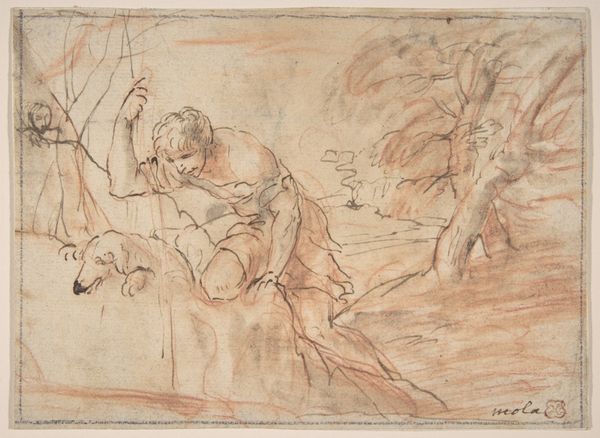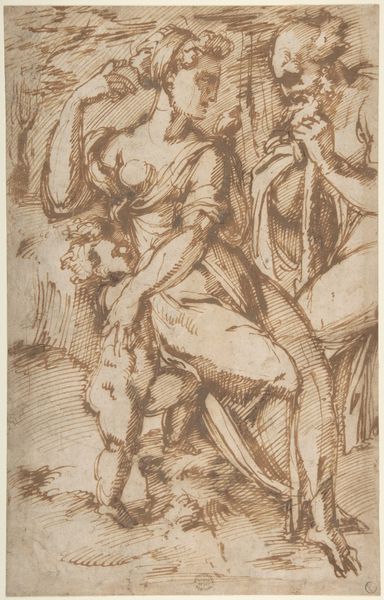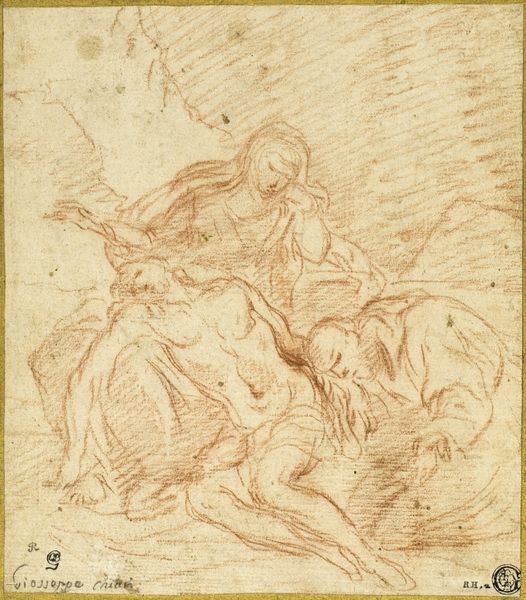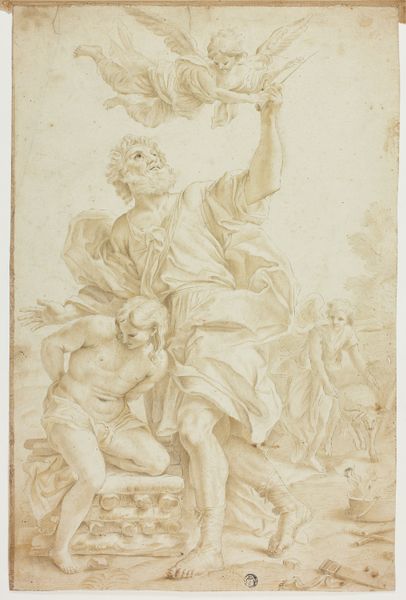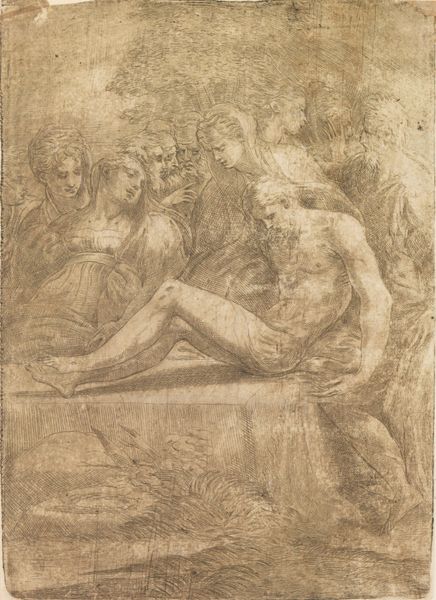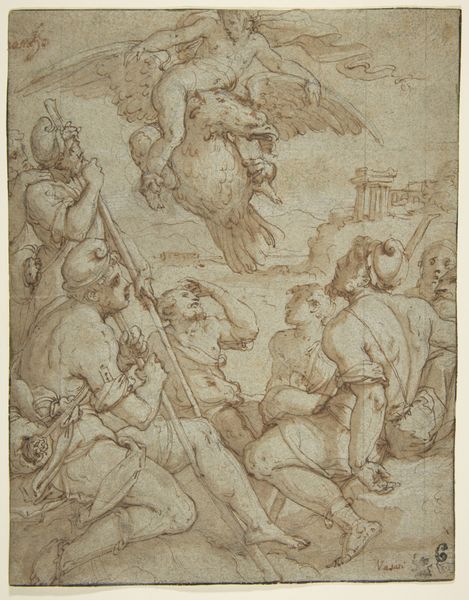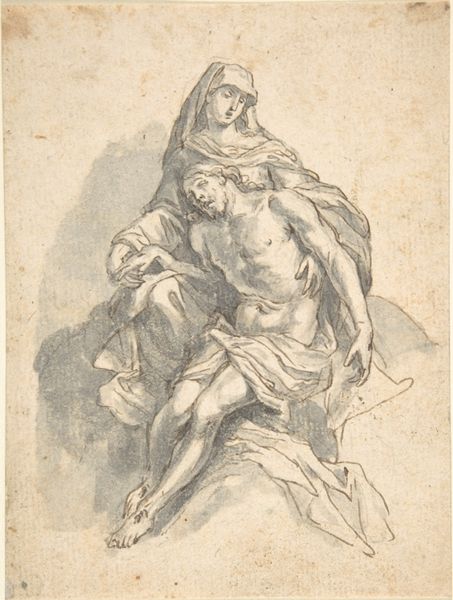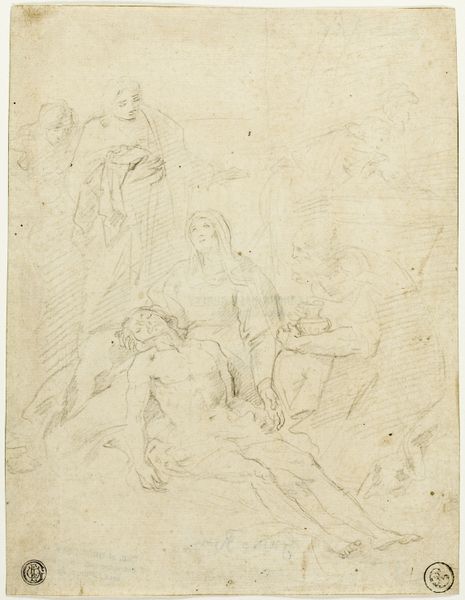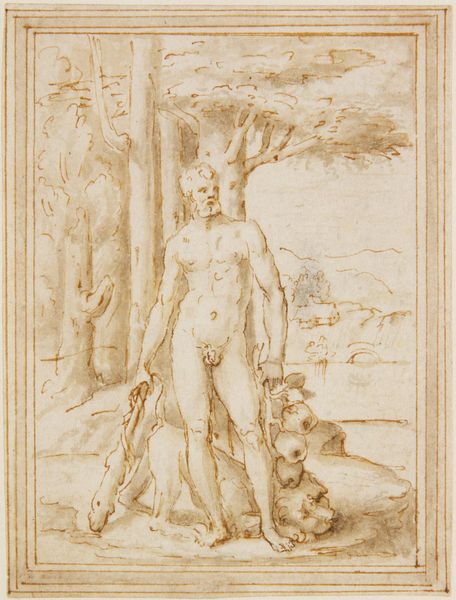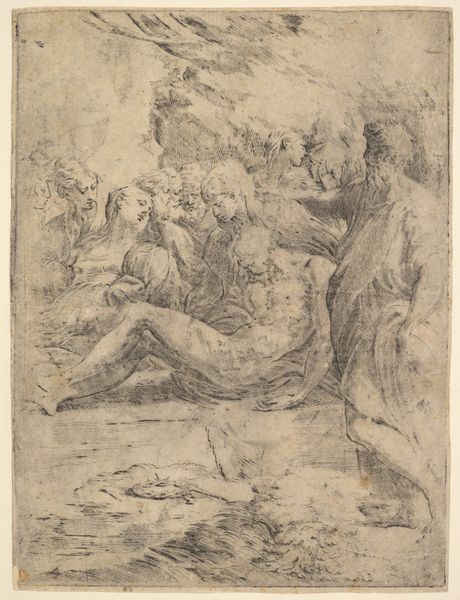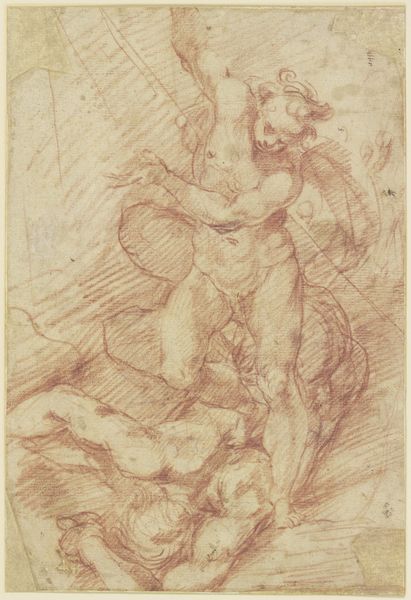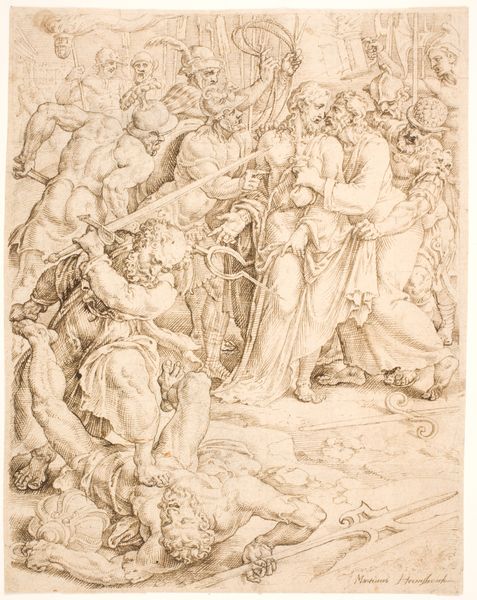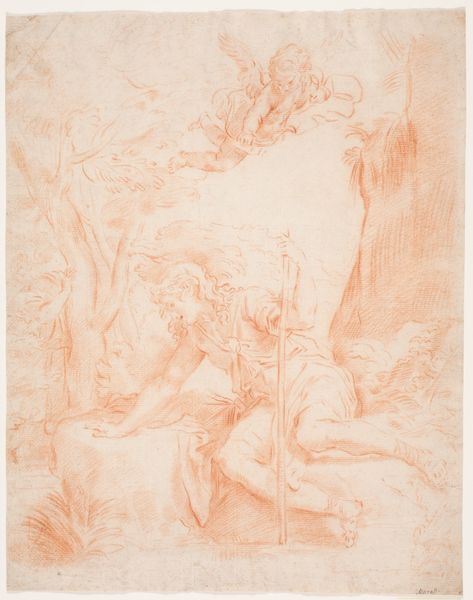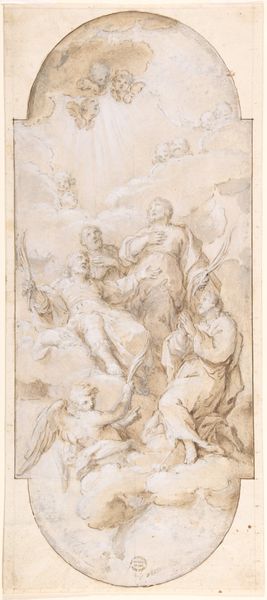
drawing, print, etching, ink
#
portrait
#
drawing
# print
#
etching
#
etching
#
figuration
#
11_renaissance
#
ink
#
history-painting
#
italian-renaissance
#
christ
Dimensions: 12 13/16 x 9 1/16in. (32.5 x 23cm)
Copyright: Public Domain
Editor: Here we have Pietro Testa’s etching, "The Virgin Lamenting over the Dead Christ," likely created sometime between 1612 and 1650. The figures seem caught in a moment of raw, almost unbearable grief. What stands out to you in this piece? Curator: Look at the symbols carefully placed at the scene's base: the crown of thorns, hammer, and nails. They aren't just instruments of torture; they become relics, imbued with the emotional weight of the Passion. Consider how frequently these objects, this composition, reappears in art across cultures. Why do you think this image continues to resonate? Editor: I suppose because grief is universal. I'm interested in the pyramid in the background; does that suggest something about the passage of time or cultural memory? Curator: Precisely. The pyramid hints at ancient Egypt, linking Christ's suffering to the vast sweep of history and implying timeless themes of sacrifice and redemption. Note how it is softened. Nothing about this etching is documentary. What emotional truth is the artist trying to arrive at? Editor: It seems to be less about the historical event and more about the enduring experience of sorrow and loss, perhaps? Curator: Precisely. And even, perhaps, the transformative power of love in the face of unimaginable pain. Do you notice anything about the angle of the ladder, juxtaposed with the pyramidal form? Editor: The ladder hints at an ascent, almost opposing the heaviness of death at the bottom, creating a subtle tension and perhaps alluding to the possibility of resurrection, while the pyramid symbolizes the ancient, stoic nature of death. I learned to look beyond the obvious religious narrative here and into universal experiences of mourning and hope. Curator: Indeed, by understanding how these symbols operate and echo across time, we tap into shared human experiences. This allows the piece to remain poignant centuries after its creation.
Comments
No comments
Be the first to comment and join the conversation on the ultimate creative platform.
